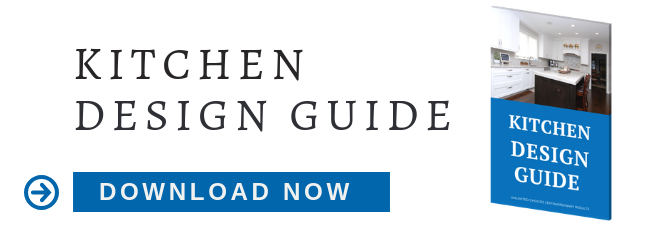 Are you on the fence about whether a traditional kitchen is right for you? While some clients are 100% confident about their personal design style, others need more time perusing photographs and learning about different design tenets before arriving at a conclusion.
Are you on the fence about whether a traditional kitchen is right for you? While some clients are 100% confident about their personal design style, others need more time perusing photographs and learning about different design tenets before arriving at a conclusion.
This post is the final in a series we’ve created to explore different kitchen design styles, including contemporary, transitional and – now – traditional kitchen designs.
Traditional Chicago Kitchen Design in a Nutshell
"Grandma’s Kitchen" is the historic way to discuss traditional kitchen design tenetss. But, let’s face it – many of the “grandmas” of today are Baby Boomers who were steeped in modern design styles when they were younger. As a result, that description may not be as accurate anymore, depending on who your grandparents were.
A more apropos description would be a kitchen that focuses on a feeling of warmth, homeyness, coziness, and the idea that the kitchen is the "homemade cookie heart-of-the-home." Traditional design features use ample embellishments, including furniture-style details, to visually enhance the kitchen’s functional layout and amenities.
So, some of the things you’re more likely to see in a Chicago kitchen design based on traditional design principles include:
Raised cabinet door panels
Contemporary designs focus on a sleek and streamlined look. Traditional kitchens, on the other hand, enjoy a little extra embellishment or adornment. Traditional cabinets are a prime example of this, where raised panel doors are the norm.
While embellishments are attractive, they also require more attention in terms of dusting or wiping them down, since extra grooves and edges mean more places for dirt, grease, or kitchen grime to accumulate. If you prefer a lower-maintenance traditional kitchen design, Shaker-style cabinet doors are a happy medium.
Furniture-style embellishments and trim
The “vibe” of a traditional kitchen design is all about homeyness, warmth, and comfort. As a result, most traditional kitchens have their fair share of furniture-style embellishments and trim pieces – including corbels, more decorative end caps, adorned hoods or more complex countertop edge details.
Read, 9 Ornate Trim Details for a Traditional Chicago Kitchen Remodel, to explore your options.
Repurposed furniture
Along those same lines, you may actually repurpose actual furniture pieces as part of the heirloom-turned-contemporary feel of a traditional kitchen. For example, using an old dresser as a freestanding island, or converting an antique armoire into a kitchen pantry. These items offer that feeling of “home sweet home” traditional kitchens are known for.
Neutral color palette
A neutral color palette is another tenet of traditional kitchen designs. The typical traditional kitchen has a more calm and soothing palette, one that serves a backdrop for the seasonal accents, and heirloom display areas, that evolve throughout the year. This is different from the contemporary kitchen, which often focuses on more bold and crisp pops of color.
Simple and elegant backsplashes
While more ornate details are a classic element of a traditional kitchen, the backsplash is typically the exception to this rule. In order to avoid competing with more ornate cabinet trim and other furniture-style accents we’ve mentioned, a traditional backsplash tends to be more simple to avoid overwhelming the space.
On the flip side, a more contemporary or modern kitchen uses the backsplash as a way to add pop, pattern, and pizazz to its inherent, streamlined aesthetic.
You may be a traditionalist if…
Other signs you’re a fan of a traditional kitchen include:
- You're penchant for farmhouse sinks
- Preferre lighting fixtures are more ornate - perhaps even lighting options that resemble retro or antique reproductions
- You choose a Big Chill fridge over a sub-zero version any day
- Mix-and-match finishes catch your eye more often than a single-color or finish option
Are you in the beginning stages of planning a Chicago kitchen remodel? Schedule a consultation with the team here at Kitchens & Baths Unlimited. We’ll help you determine whether a traditional kitchen is your ideal, OR we’re happy to help you put your eclectic tastes together for an integrated look.



